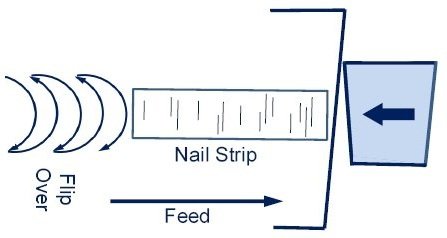High Tech in the 1700s: Nail Manufacturing in Amesbury
In the late 1700s, Amesbury would have been considered a high-technology center thanks to Jacob Perkins’s “disruptive” nail-making machinery powered by the falling water of the Powow River. Prior to his invention, iron nails were mostly made by hand, one at a time, in small shops and as a cottage industry in homes. Then, in America, a nail shortage followed the Revolutionary War because nails were no longer imported from England. This created an incentive for Perkins to invent his machinery for producing nails in quantity at a reasonable price.
A process of slitting iron sheets into strips and hammering one end of each strip to create a nail head may seem trivial to us today, but it required knowledge of metallurgy and metal-forming machinery. Perkins was the man with the knowledge, and he also had the cleverness and persistence to keep refining his process until it became commercially successful – even though its success was short-lived.
ACM’s persistent volunteer researcher, Mike Harrold, looked into the technical challenges Perkins and others overcame to automate nail-making in those primitive days. His recent paper, “Jacob Perkins & Amesbury Industrial Nail Manufacture,” describes Perkins’s nail-making pioneering and the work of those who preceded and followed him.
Read “Jacob Perkins & Amesbury Industrial Nail Manufacture.”


